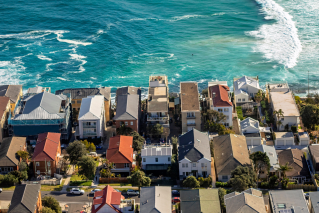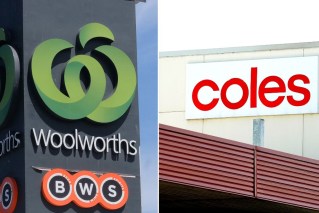Is Australia walking a ‘narrow path’ towards a per capita recession?

Australia is expected to avoid an all-out recession in 2023, but it’s starting to feel like one as the cost of living and interest rate hikes cause shoppers to close their wallets.
And while we might avoid a full-blown recession, Australia could be afflicted by another type of downturn, a “per capita recession”.
Australian Bureau of Statistics data published on Wednesday suggest the volume of retail spending over the March quarter fell an estimated 1.2 per cent, Commonwealth Bank economists say, with rising mortgage bills having their intended effect – inducing a consumer-driven economic slowdown.
“Given the rapid rate of population growth, per capita spending is even weaker,” CBA economist Belinda Allen said.
“[We] expect consumer spending to slow from here as the impact of higher interest rates intensifies.
“The fixed-rate home loans roll-off is just gaining pace and variable rate mortgage holders will face another lift after the latest interest rate hike by the Reserve Bank of Australia [in May].”
Wednesday’s retail figures are further evidence that the economy is on a tightrope in 2023, with the RBA attempting to engineer a soft landing while taming sky-high inflation.
What is a per capita recession?
A ‘per capita recession’ is where the national economy goes backwards on a person-to-person basis.
Economists at the Commonwealth Bank and ANZ Bank are predicting this will happen later this year as consumer spending – which is two-thirds of Australia’s economy – continues to plunge.
Gross Domestic Product (GDP) per capita growth was already flat in the December quarter, meaning the deterioration of consumer spending since then could mean the March quarter was negative.
With population growth soaring after COVID-19, experts say Australia is unlikely to post two straight quarters of negative growth, and so will avoid what’s often defined as a recession.
That’s according to RBA governor Philip Lowe, who said on Tuesday night that Australia is still within the lines of a “narrow path” where inflation eases by 2025 without crashing the economy.
“We can only do this if people believe that inflation is going to come down, and that partly underpins our decision [on Tuesday],” he said.
‘We’re deadly serious about [bringing inflation down] and we will do what’s necessary.”
‘Weak household sector’
Indeed APAC economist Callam Pickering said the risk of a per capita recession is very real.
Australia is likely looking at the biggest non-COVID fall in retail volumes since 2001, he said.
“If you have a weak household sector, you almost always have a weak economy,” he said.
“Population growth means a technical recession is very unlikely, but it could very well feel like a recession for households and businesses.”
It’s worth remembering that a decline in average economic activity per person is not unheard of in Australia, in fact it occurred without an economy-wide recession in 2019, before COVID-19.
And economists say not every household will feel the squeeze equally, with near-record low unemployment set to underpin resilience for families feeling intense cost-of-living pressures.
Economist Saul Eslake, who prefers to define a recession as a 1.5 percentage point rise in unemployment within 12 months, said Australia’s jobs market is key to avoiding a downturn.
But whichever way you slice it, there’s an economic downturn of some sort on the cards in 2023.
“It’s highly likely there’s some sort of economic downturn on the horizon,” he said. “That’s what the RBA is seeking to engineer – a significant slowing in the rate of growth.”








